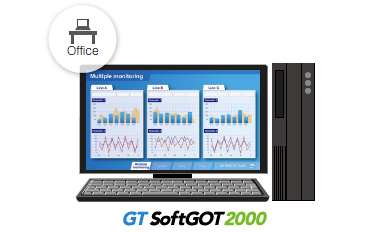1. EXECUTIVE SUMMARY
- CVSS v3 9.8
- ATTENTION: Exploitable remotely/low attack complexity
- Vendor: Mitsubishi Electric
- Equipment: GT SoftGOT2000
- Vulnerabilities: Infinite Loop, OS Command Injection
2. RISK EVALUATION
Successful exploitation of these vulnerabilities could create a denial-of-service condition or enable arbitrary code execution.
3. TECHNICAL DETAILS
3.1 AFFECTED PRODUCTS
The following version of GT SoftGOT2000 is affected:
- GT SoftGOT2000: Version 1.275M
3.2 VULNERABILITY OVERVIEW
3.2.1 LOOP WITH UNREACHABLE EXIT CONDITION (‘INFINITE LOOP’) CWE-835
A vulnerability in OpenSSL creates the potential for an infinite loop in the affected product, which could lead to a denial-of-service condition.
CVE-2022-0778 has been assigned to this vulnerability. A CVSS v3 base score of 7.5 has been assigned; the CVSS vector string is (AV:N/AC:L/PR:N/UI:N/S:U/C:N/I:N/A:H).
3.2.2 IMPROPER NEUTRALIZATION OF SPECIAL ELEMENTS USED IN AN OS COMMAND (‘OS COMMAND INJECTION’) CWE-78
A vulnerability in OpenSSL creates the potential for OS command injection in the affected product, which could lead to arbitrary code execution.
CVE-2022-1292 has been assigned to this vulnerability. A CVSS v3 base score of 9.8 has been assigned; the CVSS vector string is (AV:N/AC:L/PR:N/UI:N/S:U/C:H/I:H/A:H).
3.3 BACKGROUND
- CRITICAL INFRASTRUCTURE SECTORS: Critical Manufacturing
- COUNTRIES/AREAS DEPLOYED: Worldwide
- COMPANY HEADQUARTERS LOCATION: Japan
3.4 RESEARCHER
Mitsubishi Electric reported these vulnerabilities to CISA.
4. MITIGATIONS
Mitsubishi Electric has released a patch for these vulnerabilities and recommends users update affected products to Version 1.280S or later. Users should contact Mitsubishi Electric to obtain the patch.
For instructions on how to check the product version and more information regarding contacting Mitsubishi Electric, please refer to Mitsubishi Electric’s security advisory.
Mitsubishi Electric recommends users take the following precautions to minimize the risk of these vulnerabilities being exploited:
- When internet access is required, use a virtual private network (VPN) to prevent unauthorized access.
- Use the products within a LAN and block access from untrusted networks and hosts.
- Update the OPC UA server to the latest version available.
- Install antivirus software on computers running the affected software.
- Restrict physical access to computers running the affected software.
CISA reminds organizations to perform proper impact analysis and risk assessment prior to deploying defensive measures.
CISA also provides a section for control systems security recommended practices on the ICS webpage at cisa.gov/ics. Several CISA products detailing cyber defense best practices are available for reading and download, including Improving Industrial Control Systems Cybersecurity with Defense-in-Depth Strategies.
Additional mitigation guidance and recommended practices are publicly available on the ICS webpage at cisa.gov/ics in the technical information paper, ICS-TIP-12-146-01B–Targeted Cyber Intrusion Detection and Mitigation Strategies.
Source:
https://www.cisa.gov/uscert/ics/advisories/icsa-22-221-01


Stay connected